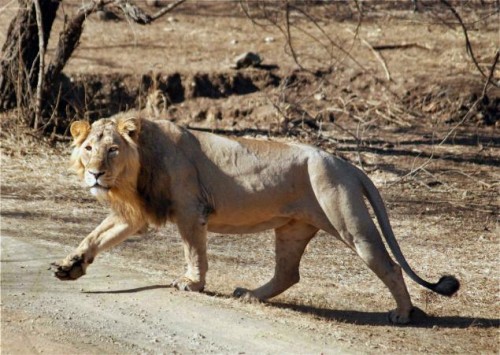SPECIES WATCH: It is a day that holds many promises. A day that may eventually help a number of people working tirelessly to save India’s tiger know if their efforts have reaped rewards – in the form of rising number of the national animal. Starting 16th December is the third synchronized all India tiger census that is held once in every four years. For the next seven days, wildlife activists, forest officials and enthusiastic volunteers will count the future of tigers.
India holds the largest number of tigers in the world today. The last tiger census conducted in 2010 showed India to be home to 1706 wild tiger, a number up by 295 from the census conducted in 2006. Since then, individual state census conducted regularly have indicated that tiger population in many reserve forests of the country are indeed increasing, but all eyes are now on the National Census to get the all-India count and also note the health of the habitat the mega predator lives in.
What the Census will Involve
Preparations for the synchronized census were ongoing in all 44 tiger reserves of the country for the last couple of months. Volunteers and forest staff would do carnivore sign survey, prey species encounter rate, habitat evaluation and vegetation quantification as part of this census operation. This means, in addition to the big cats, other carnivores and herbivores in the sanctuaries will be counted. The volunteers will also carry out sampling of tree and grass contents in the parks to know food reserves and habits of animals. During data collection, ‘indirect signs’ like pug marks, scats, race marks, skin remains, and sighting of the animal as well as its sound would be recorded.
Use of camera traps in a number of protected reserves like the Corbett in Uttarakhand and Mudumalai Tiger Reserve in Tamil Nadu have eased the otherwise tedious process of counting tigers to a large extent.
“Since the past two years, we conduct tiger census twice a year with camera traps. Over 150 cameras have been installed within the Mudumalai Tiger Reserve. The cameras will be shifted periodically to different beats in the reserve and the images captured are saved and analyzed”, said a forest official.
Although, Mudumalai does not need extra help to count its tigers, volunteers from different NGOs, colleges and members of the public have been welcomed in many other reserves of India. These volunteers will accompany the forest guard and the forest watcher for the field analysis. In vulnerable areas, the team members may be more.
In Karnataka alone, over 500 wildlife enthusiasts and wildlife conservationists are taking part in the weeklong survey, which begins at the three tiger parks in the region on Wednesday.
“Around 1,000 surveyors will be on duty in the tiger parks,” a source said, adding that 230 of them will work at Bandipur National Park alone.Bandipur houses 105 tigers, the highest compared to other parks in the state which boasts of over 300 tigers.
Techies turning Volunteers
The once in four years census is being seen as a great opportunity by animal lovers to spend time in the forest and be actively involved in an event that the world will be watching keenly.
Ranjith B S, team head with a software firm in Bangalore has taken 10 days off work to volunteer with the national tiger census and even encouraged his friends to come along.
Fasi Ahmed, 25, a resident of Benson Town, recently quit job. But as soon as he heard about the tiger census, he put his job hunt on hold.
“I’ve some job offers in hand but I cannot miss the big cat census, which happens only once in four years,” he said.
Asked if he is undeterred by the recent attacks on humans in Mysore that resulted in four deaths, Fasi said such things are like road accidents.
“We can’t sit at home just because such accidents take place,” he said. “The very idea of staying inside the forest and being part of such a count excites me.”
Most volunteers participating in the census are aware though that it is not an easy task. These volunteers will need to spend hours in dense forested areas with no electricity, limited food supply and no connectivity with the outside world. Accommodation when in the forest will be at temporary camps or forest department check posts. Bug bites, scratches, beaten paths – sometimes no paths and the danger of a wild animal like the tiger lurking in some corner is a given. But all this has not dampened the enthusiasm.
Pranav J, a bank employee, recalls his stay inside a jungle near Mysore during the last census.
“My friends and I went with enough rations and food and stayed with forest guards for a week,” he said. “We’re going to repeat it this time. Apart from a break from routine, the census gives us an opportunity to understand the forest better and respect nature.”
Forest officials said all volunteers have to sign a bond before they enter the forest, stating the department is not responsible for any untoward incidents like animal attacks.
“Volunteers should also abide by forest laws, like not wearing bright colours and posing a threat to wildlife,” said a senior official. The volunteers have also been barred from carrying any cameras or cell phones.
The Task
Eight days in the jungle will involve,
# Drawing transacts, mapping GPS coordinates, rigorous walking to fill various data sheets
# Noting down sightings, pugmarks, tiger scats
# Counting co-predators like leopards
# Noting sightings of herbivores like sambhar, nilgai and wild buffalo
# Analyzing vegetation in respective forest tracts: tree species, shrub abundance, invasive weeds
# Studying human disturbance of tiger habitats, loss of ground cover in forests
Let us hope, India’s tigers and its habitat are safe and sustaining. Watch out for this space to find out the results of the tiger census.
More Related Stories,
Tiger Population Slowly but Steadily on the Rise in Sunderbans
Tiger Count up in India, Reveals Tiger Census 2010
Madhya Pradesh no more Tiger State of Inda
Image via cc/Flickr via Bjoern , Christopher Kray, Dawn Huczek












I wish to volunteer for the tiger counting project. May I pls know how I can do that.
Hi Rohan, The tiger counting for the national census was conducted last year and is already over. You must have read that the census results were declared recently and India has a total of 2226 tigers at present. However, if you wish to volunteer, do contact your local forest department or a conservation organisation and they will inform whenever a census is to be carried out next and they are in need of volunteers.